
- Home
- Photography Tours
- Diary / Blog
- Galleries
- Foreign Trips
- Tasmania 2016
- NE Queensland 2016
- Western Alps 2016
- NE Spain 2016
- Australia's Wet Tropics 2015
- Australia's Top End 2015
- SW Australia 2015
- Switzerland 2015
- Andalucia 2015
- Belize 2015
- Australia 2014
- Switzerland 2014
- Belize 2014
- Bahama Islands 2014
- Switzerland 2013
- Ecuador 2012-2013
- Florida 2011-2012
- Vancouver Island 2011
- Australia 2010
- Peru 2008
- Bulgaria 2007
- Lesvos 2006
- California 2006
- New Zealand 2005
- Extremadura 2005
- Goa, India 2004
- The Gambia 2003
- About
Western Alps
June/July 2016
Part 3 : Butterflies
Skippers & Whites
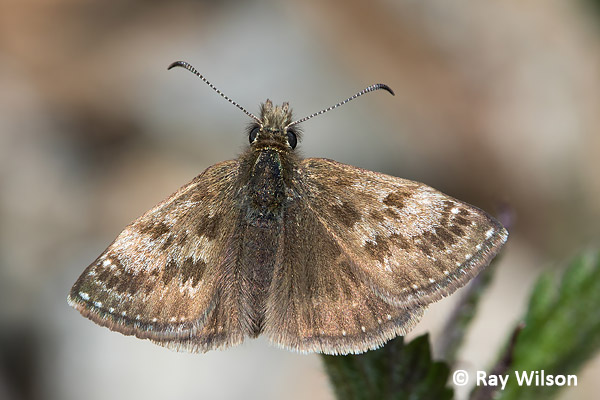
Dingy Skipper (Erynnis tages)
The skippers are small, fast-flying, mostly drab, moth-like butterflies. The majority of the 25 or so species found in the western Alps are extremely similar in their colouring and the variability of their white markings and provide probably the hardest identification challenge among the European butterflies.
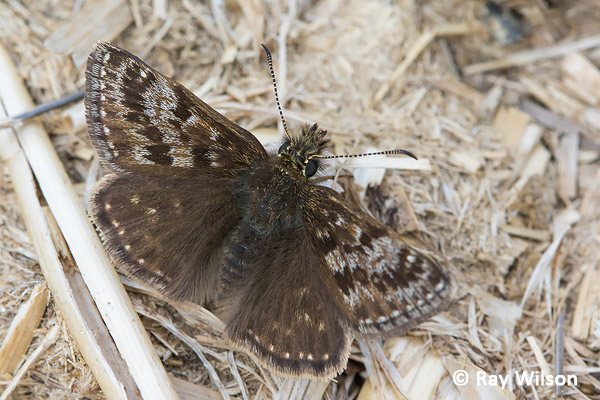
Dingy Skipper (Erynnis tages)
Dingy Skipper is one of the commonest and most widespread of the European skippers. There are a few other species that have similar forewing markings, but Dingy Skipper is easily separated from them by the plain brown upper hindwing that has a row of small white spots near the margin of the hindwing.
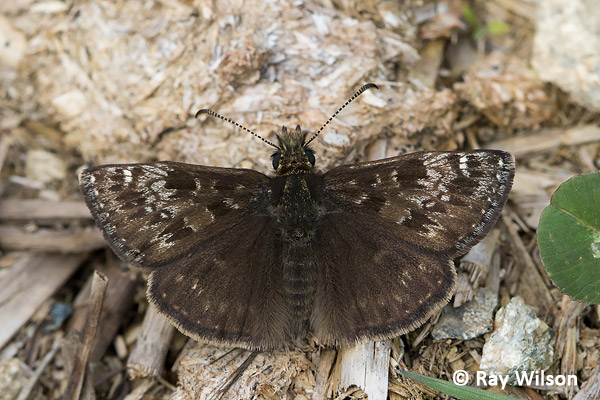
Dingy Skipper (Erynnis tages)
The pattern of white spots on the upperside of the hindwing of Red Underwing Skipper is subtly distinctive. This species is relatively small, even compared to other skippers, and its habit of flying fast close to the ground can make it difficult to detect at times.
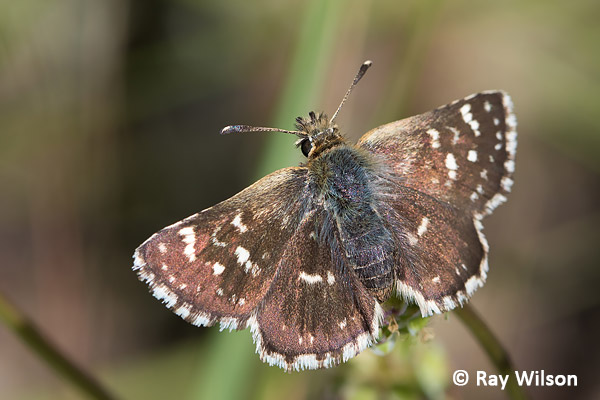
Red Underwing Skipper (Spialia sertorius)

Red Underwing Skipper (Spialia sertorius)

Red Underwing Skipper (Spialia sertorius)
The grizzled skippers are a difficult group to identify, but subtle differences in their upperwing (and underwing if you are lucky enough to see it) do allow identification of most individuals.
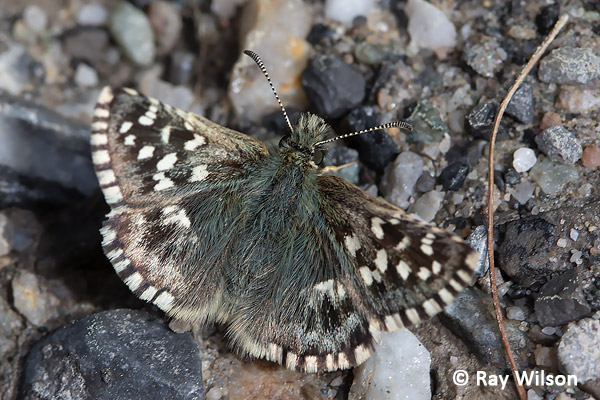
Oberthur's Grizzled Skipper (Pyrgus armoricanus)
The degree of contrast and pattern of the hindwing markings are an important feature in identifying some of the species. Oberthur's Grizzled Skipper tends to have quite contrasty, pale, diffuse markings in comparison to others (eg. Alpine Grizzled Skipper or Large Grizzled Skipper).

Oberthur's Grizzled Skipper (Pyrgus armoricanus)
Alpine Grizzled Skipper can be separated from all other European skippers by the presence of 3 spots in a line about halfway along the rear margin of the hindwing. It also has an almost unmarked hindwing even compared to the very worn Oberthur's Grizzled Skipper shown above.
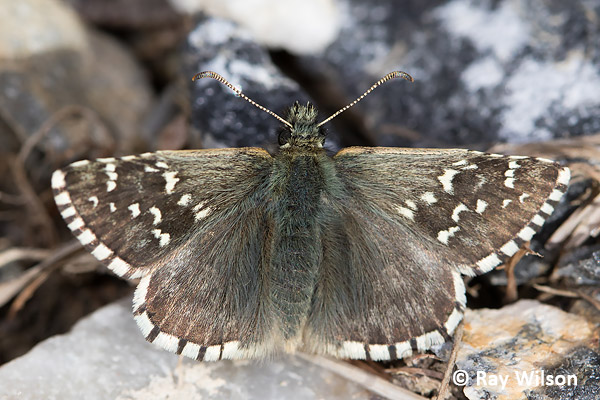
Alpine Grizzled Skipper (Pyrgus andromedae)
Large Grizzled Skipper has similar hindwing markings to Alpine Grizzled Skipper but lack the 3 spots on the forewing mentioned above.
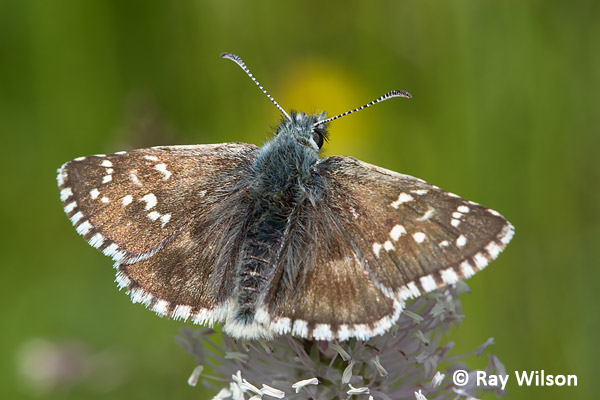
Large Grizzled Skipper (Pyrgus alveus)
Southern Grizzled Skipper is often regarded as a double-brooded subspecies of Grizzled Skipper (Pyrgus malvae) and the two are inseperable in their external morphology. Their internal genitalia, however, do show subtle differences. Identification in the field is only possible in places where their ranges do not overlap.
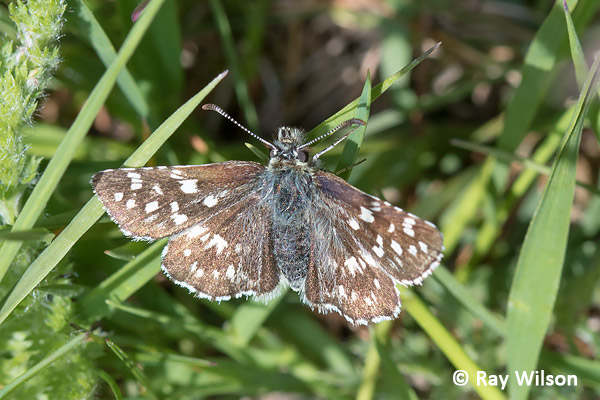
Sothern Grizzled Skipper (Pyrgus malvoides)
About 15 species of "whites" occur in the Western Alps and some of these are high altitude specialists.
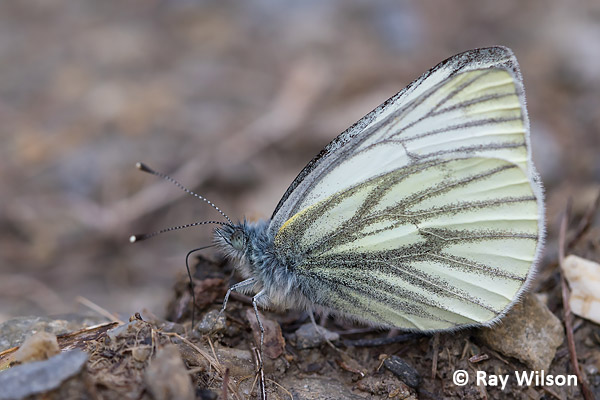
Dark-veined White (Pieris bryoniae)
Two examples of these are the Dark-veined White (also sometimes known as the Mountain Green-veined White) and Mountain Small White. Both these species are usually only found above 800m altitude and may be found as high as 2700m.
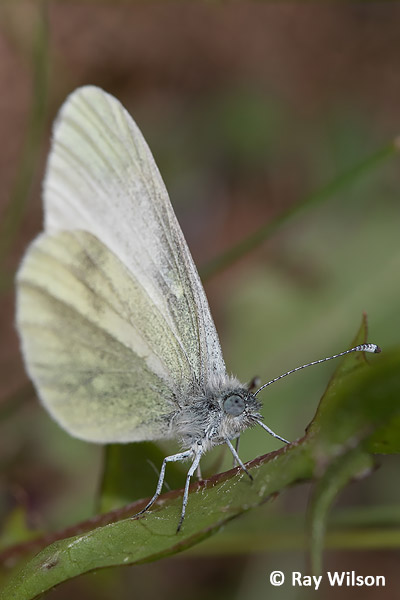
Mountain Small White (Pieris ergane)
The identification of Wood White and Real's Wood White is a well known problem and no consistant differences between external morphological features are known.
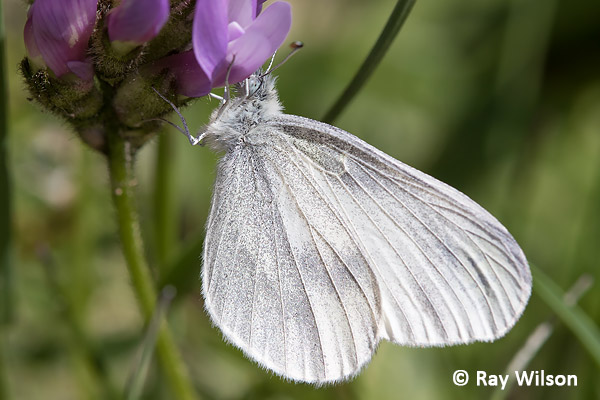
Wood White / Real's Wood White (Leptidea sinapis / L. reali)
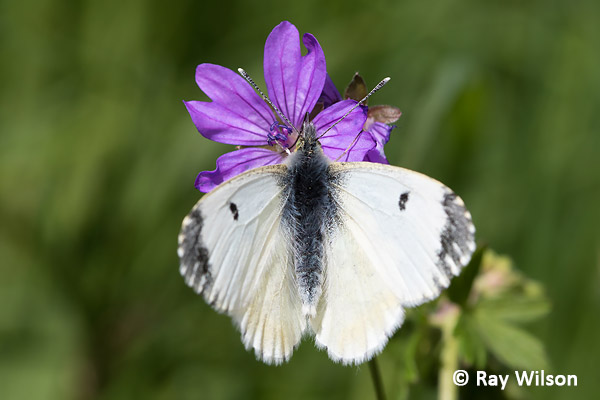
female Orange-tip (Anthocharis cardamines)
Ray Wilson owns the copyright of all images on this site.
They may not be used or copied in any form without prior written permission.
raywilsonphotography@googlemail.com